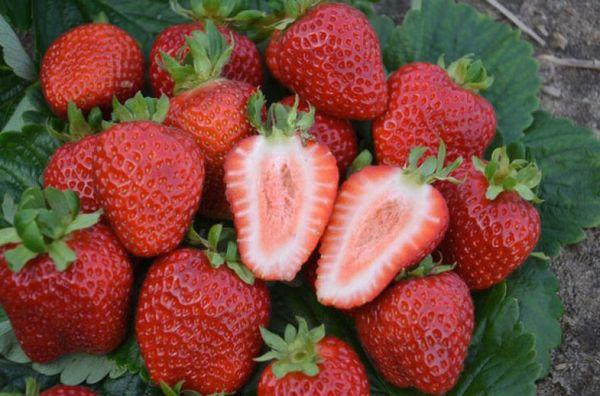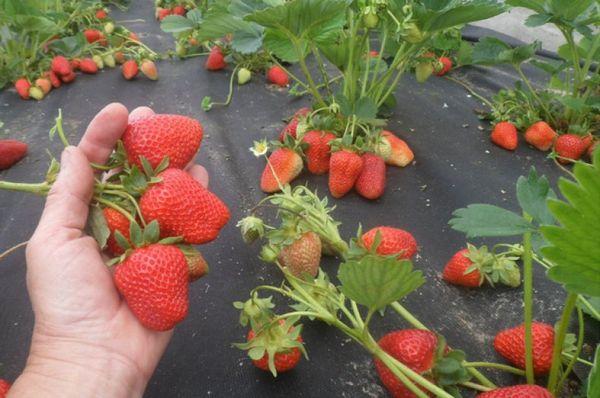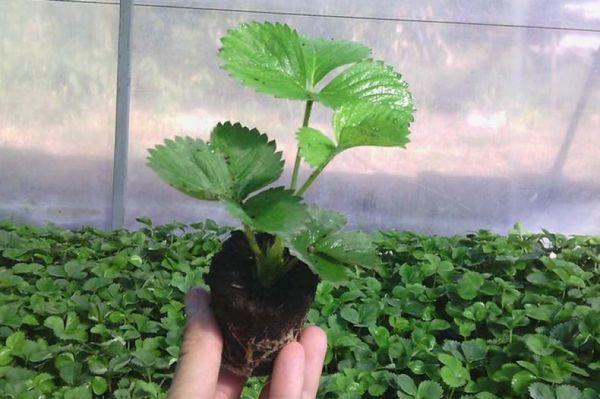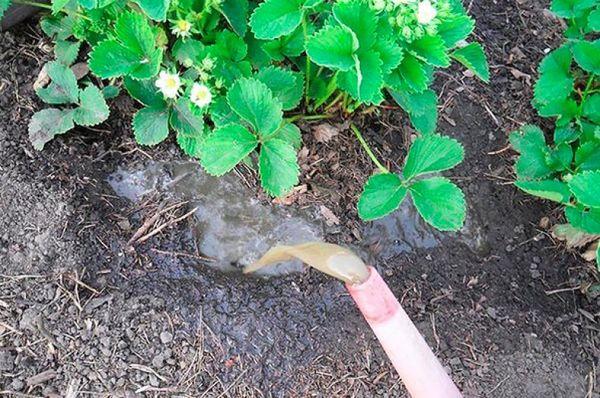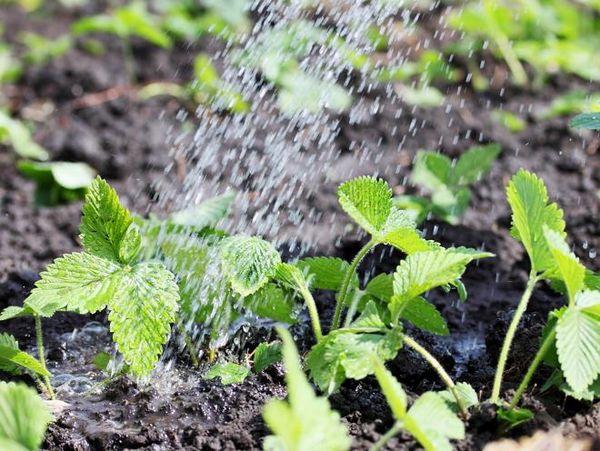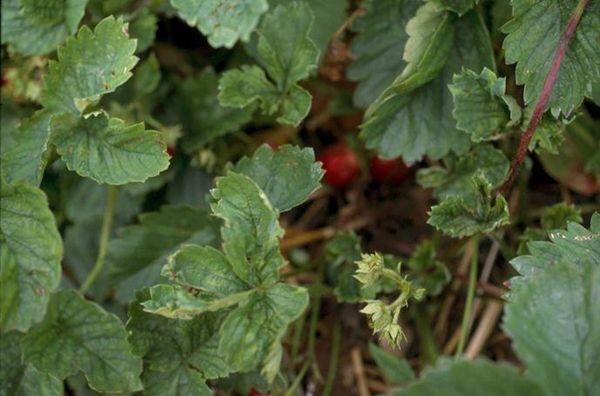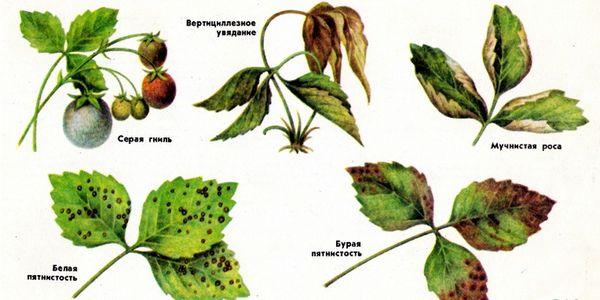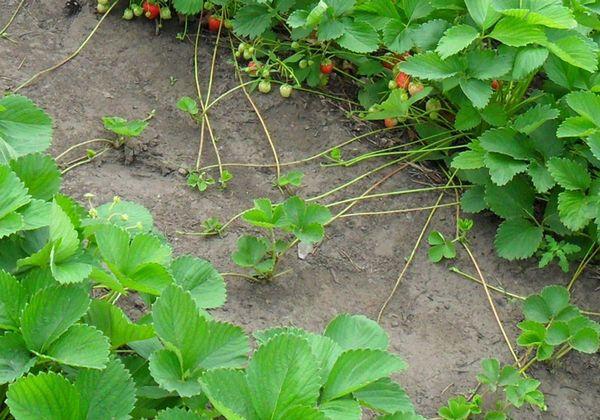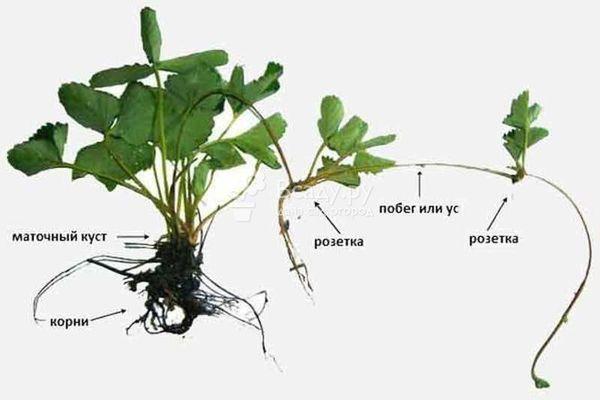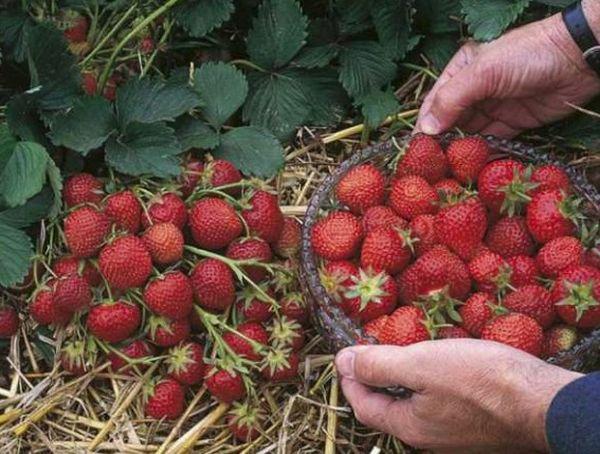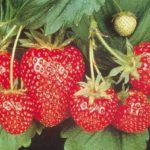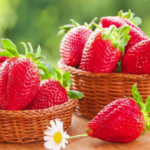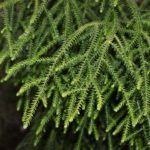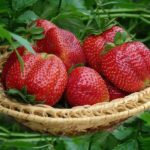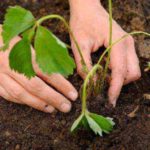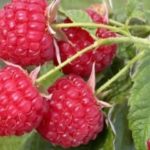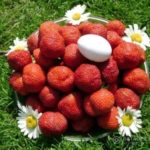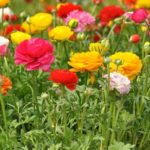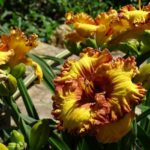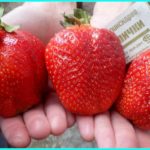The Divnaya strawberry variety stands out for its rich strawberry aroma and unusual elongated shape. The crop is valued by summer residents and farmers for its balanced sweet and sour taste, the density of the pulp, which determines its versatility of use, and high transportability.
- History of selection
- Description and characteristics of strawberry Divnaya
- Positive and negative sides of the berry
- Subtleties of cultivation
- Dates and place
- Preparation of planting material
- Landing technology
- Recommendations for crop care
- Soil and fertilizers
- Watering and humidity
- Relation to temperature
- Diseases and pests
- Strawberry propagation
- Collection and storage
- Difficulties in growing
History of selection
The Divnaya strawberry was tested and registered in the State Register of Breeding Achievements in 2004 under number 9204342. The variety was bred by domestic breeders much earlier (1987) by cross-pollination of the Festival strawberry and the Holiday variety.
The culture is recommended for cultivation in the North-West region for personal and industrial use.
Description and characteristics of strawberry Divnaya
The plant grows normally and bears fruit in open ground, greenhouses, and even at home when planted in pots.
Strawberry bushes of the Divnaya variety are erect, not prone to lodging, with numerous green glossy leaves. Leaf blades are serrated, medium wrinkled.
The flower stalks of the plant form multi-flowered inflorescences, blooming with large white flowers. Under the weight of the crop they do not come into contact with the ground. The crop is mid-season, self-fertile, and does not require additional pollinators.
Strawberries produce abundant aerial shoots that require pruning.
The fruits of garden strawberries are neckless, finger-shaped, weighing 15–30 g. Large berries are found in the first wave of ripening. The closer to the end of fruiting, the smaller the fruits on the bush. The pulp is aromatic with a dessert taste. The structure is dense, homogeneous, without voids.
Positive and negative sides of the berry
Farmers and gardeners in reviews give preference to Divna strawberries for the following positive characteristics:
- high yield if agricultural technology is followed - 1–1.2 kg per bush or 150 centners per 1 ha;
- sweet and sour taste, strawberry aroma;
- versatility of fruit use;
- dryness, presentation of berries;
- crop resistance to frost down to -25° C, drought;
- average susceptibility to fungal diseases.
Winter hardiness and drought resistance allow the plant to be grown in the southern regions and in areas with long, frosty winters, using covering material and greenhouses.
To propagate the Divnaya strawberry variety, farms and amateur gardeners do not have to purchase planting material due to the formation of multiple tendrils.
The disadvantages of strawberries include:
- uneven shape of the fruit, which makes sales difficult;
- small berries that ripen closer to the final harvest;
- fruiting extended over time;
- susceptibility of the crop to return frosts.
With prolonged summer rainfall, the taste and aroma of Divnaya garden strawberries loses its brightness and expression.
Subtleties of cultivation
In obtaining a bountiful harvest, an important role is played by the choice of site, preparation of seedlings, determination of timing and adherence to the planting scheme.
Dates and place
Divnaya strawberries are planted in the spring after the soil has warmed up, but more often from July to early September, when viable planting material (whiskers) appears.
The beds for cultivation are erected on a flat, well-lit place. Shade and partial shade lead to fruit shredding. Due to the close occurrence of groundwater (above 70 cm from the surface), as well as from growing in lowlands, roots rot and plants get sick.
Preparation of planting material
Before planting strawberries, pick off dried leaves and remove flower stalks. It is unacceptable to plant plants with signs of disease - spotted, curled or holey leaves, or a dried, dark-colored root system.
The culture is soaked in Kornevin solution, a nutritious nettle infusion. If the roots are longer than 10 cm, cut to the required length.
Landing technology
For 1 sq. m, 4 Divnaya strawberry bushes are planted, maintaining a distance of 30 cm between plants.
Algorithm for planting crops:
- dig a hole 10 cm deep and moisten it;
- place the plant in the soil so that the “heart” remains flush with the surface, not covered with soil;
- the soil is compacted;
- Repeatedly water abundantly and mulch.
It takes 3–4 weeks for the crop to take root; for the first 14 days, seedlings require daily irrigation.
Recommendations for crop care
Caring for Divna strawberries after planting consists of regular irrigation, fertilizing, trimming mustaches, and protection from pests and diseases.
Soil and fertilizers
The culture loves fertile water- and breathable, slightly acidic soils. If necessary, reduce the acidity of the soil with ash, lime, and dolomite flour.
Heavy soils are loosened with peat and sand is added. Fertilize the soil when digging. For 1 sq. m. you will need a bucket of humus, rotted manure with the addition of 30 g of superphosphate or 50 g of nitroammophosphate.
Timely applied fertilizers increase strawberry yields by a quarter.
In early spring, the crop is fed with nitrogen - a solution of mullein, bird droppings or urea, pouring 500 ml of solution (2 tablespoons of dry matter per bucket of water) under each bush.
When flower buds form on plants, strawberries require a mineral complex of digestible phosphorus, potassium, and nitrogen.
When the ovaries are formed and the pilaf is poured, the Divnaya strawberries are first fertilized with a solution of boric acid, then biohumus is added, and watered with ash water.
Immediately after harvesting, potassium-phosphorus fertilizers are added to the soil for normal formation of flower buds.
Watering and humidity
The Divnaya strawberry has superficial roots; the crop cannot provide itself with water, so the growing season and fruiting directly depend on the irrigation of the bushes.
If there is a snowless winter and no precipitation in March, the crop is watered for the first time in April. From May to August, the bushes are moistened once a week, in drought - every 1-2 days.
After the fruits have formed, it is recommended to irrigate the strawberries through grooves dug in the rows to protect the berries from rot and mold. For 1 sq. m. requires 10 liters of settled warm water.
The number of waterings is reduced after moisture-retaining mulching.
Relation to temperature
The culture actively develops at 18–22°C. Divnaya strawberries, grown in the northern regions, are saved from return frosts from -3°C during flowering by covering them with agrofibre or stretching the film over metal arcs.
Although the plant belongs to frost-resistant varieties, during snowless winters the bushes need insulation with covering material, since freezing of the roots begins at -12°C.
Diseases and pests
The health of garden strawberries is judged by the appearance of the bushes. Strawberry Divnaya suffers from rots characteristic of the variety, all kinds of spots, late blight and fusarium wilt, leading to drying, curling and ultimately death of the leaves. Not only the leaf plates are affected, but also the fruits rot and mummify.
To prevent the development of fungal spores in early spring after the snow cover melts, strawberries are treated with 2% Bordeaux mixture, Hom, Skor, Ridomil, Topaz. Repeat spraying every 10 days until the flower buds open.
The following measures protect strawberries from diseases:
- regular weeding;
- compliance with crop rotation;
- purchasing high-quality planting material;
- avoiding dense plantings.
Numerous pests are controlled before flowering and after harvest.
Insects and disposal methods:
- slugs, snails - traps, mechanical collection, placement of Maldehyde granules under bushes;
- weevils, aphids, leaf beetles - treatment of the plant with Actellik;
- moths, beetles - use of Karbofos;
- ticks - spraying with Fitoverm, Actofit.
Birds that destroy part of the Divnaya strawberry crop are repelled by various methods. Among the most popular gardeners are:
- stretching the mesh over arcs or stakes;
- hanging glare objects on the garden bed that create the illusion of movement;
- placement of noise traps among the bushes at a low altitude - bundles of metal tubes, beer cans.
Scarecrows and electronic devices that scare away birds save the strawberry harvest.
Strawberry propagation
Garden strawberries Divnaya are propagated by seeds, tendrils, and dividing bushes. The first method is lengthy and does not guarantee the preservation of varietal characteristics.
Seeds are often used for breeding new and beardless varieties or in the absence of other planting material.
To grow strawberry seedlings, the seeds are placed on top of a moistened substrate consisting of equal parts of humus, sand and vermiculite, and covered with glass or film.
After the first shoots of the crop appear, the cover is removed and the roots are sprinkled with soil. Seedlings require good lighting, a temperature of 22–25° C, and regular moderate moisture. Plants peak after the formation of 2–3 leaves, and are planted in a permanent place when 6 leaf blades grow.
Divide mature strawberry bushes over four years old from spring to September.
Division technology:
- dig up the intended bush;
- remove dried parts of the plant and soil from the roots;
- get rid of flower stalks;
- The plant is placed in a basin of water and the plant is carefully divided into parts.
The resulting divisions are planted in a permanent place, but it is better to send them to a greenhouse for growing, placing each in a separate pot.
A popular method of propagating Bohemia strawberries is with mustaches that preserve varietal characteristics. Daughter rosettes with roots of the first or second order are separated from the mother bush. Three strong tendrils are left intact on the bush of the second year of life, the rest of the aerial shoots are removed.
The tendrils are cut off so that the mother plant has a 20-centimeter stem, and the young rosette has a 5-cm long stem.
Planting material is planted directly into the ground on prepared, dug and fertilized soil.
Collection and storage
Ripe, red strawberry fruits of the Divnaya variety are collected in June–July, choosing clear days, in the morning after the dew has evaporated. The harvest is harvested exclusively by hand, leaving the tails of the stalks to avoid injury and damage. Place the berries immediately in those containers or baskets in which the strawberries will be stored or transported.
At room temperature, shelf life is 1 day. Unwashed, hard, without rotten areas, the berry remains fresh in the refrigerator for up to 1 week if placed in a cardboard box with holes.
The shelf life of washed fruits at a temperature of + 2°C is reduced to a day.
Garden strawberries consumed in the first hours after picking will bring more benefits. If you want to enjoy fruits in winter, you freeze them and make home-canned food.
Difficulties in growing
Possible problems when growing Divna strawberries, causes, solutions:
- The ovary does not form - it is recommended to replace the bushes with young ones every four years, since at the end of this period the fruiting of strawberries of the Divnaya variety ends.
- If there are few fruits and they are small, it means that the flowers are not pollinated enough. Cloudy weather and prolonged precipitation reduce the activity of pollinating insects.
- If strawberries are thickened, leading to a lack of nutrients, diseases, and reduced yields, there is only one way out - remove aerial shoots in time.
- Wilting and deformation of leaves are signals from the crop about insufficient watering or lack of treatment with fungicides and insecticides. To save the strawberry bed, they increase the intensity of irrigation or cut off the green mass at the root and treat it with chemicals.
With proper planting and care, the Divnaya strawberry pleases the owners, albeit not with the highest yield, but with a wonderful aroma, dessert taste of the berries, and unpretentiousness to growing conditions.

